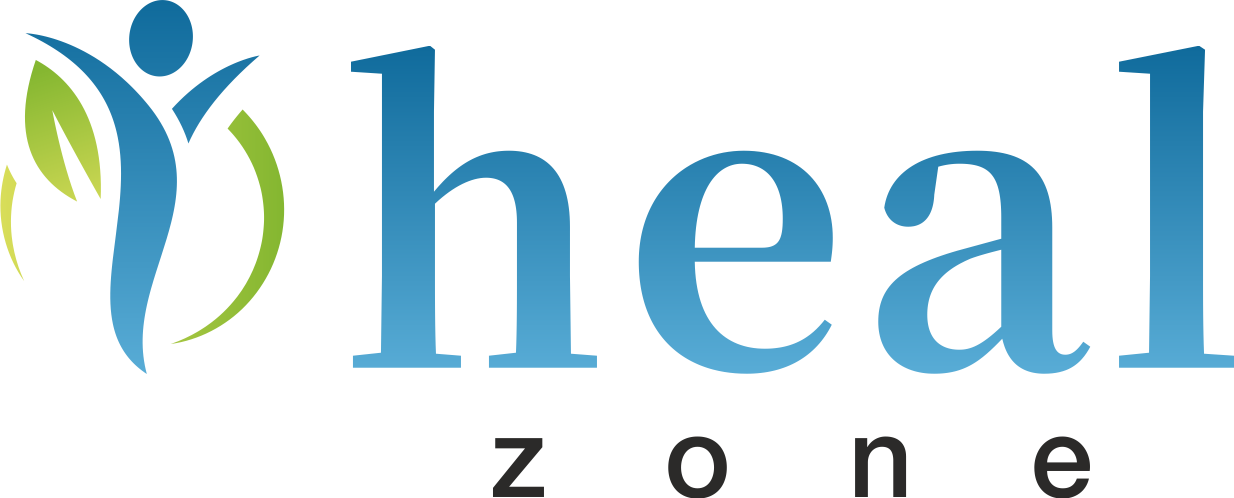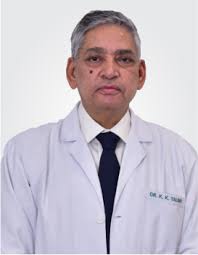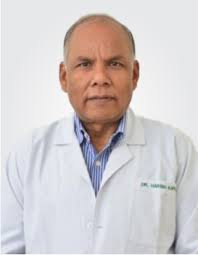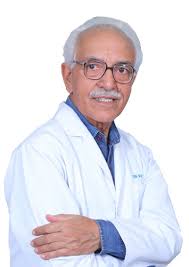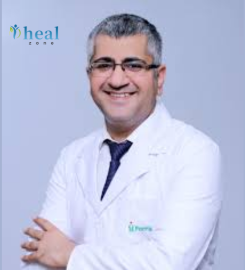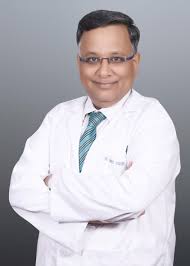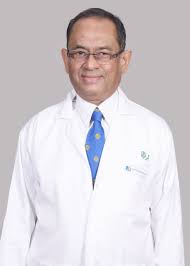What is Angiography and When is it Needed?
Angiography is a diagnostic imaging procedure that uses X-ray technology and a special contrast dye to visualize the inside of blood vessels. It helps doctors identify blockages, narrowing, or malformations in arteries or veins.
It is typically recommended for patients showing symptoms such as:
- Chest pain or discomfort
- Shortness of breath
- Suspected coronary artery disease (CAD)
- Peripheral artery disease
- Stroke or transient ischemic attack (TIA)
- Unexplained dizziness or fainting
- Abnormal heart tests (ECG, stress test, echocardiogram)
The most common type is coronary angiography, which examines the arteries of the heart. However, cerebral (brain), renal (kidneys), and peripheral limb angiographies are also performed based on clinical need.
Early diagnosis through angiography helps guide life-saving interventions like stenting, angioplasty, or bypass surgery.
What Are the Different Types or Techniques of Angiography?
Angiography can be classified based on the body part being examined and the imaging method used. The main types include:
- Coronary Angiography – Used to visualize heart arteries and detect blockages. Usually done via femoral or radial artery.
- Cerebral Angiography – Evaluates blood vessels in the brain, often used for stroke assessment or aneurysm detection.
- Peripheral Angiography – Assesses blood flow in the arms or legs, often used for patients with peripheral artery disease.
- Pulmonary Angiography – Used to detect blood clots in the lungs (pulmonary embolism).
- Renal Angiography – Looks at blood vessels of the kidneys to evaluate causes of high blood pressure or kidney disease.
Techniques Used:
- Catheter-Based Angiography: Traditional method using a contrast dye and X-ray.
- CT Angiography (CTA): Uses computed tomography and contrast for detailed 3D images.
- MR Angiography (MRA): Uses magnetic resonance imaging, usually without radiation exposure.
Each type is selected based on the patient's symptoms, medical history, and the organ system being investigated.
What is the Standard Treatment Protocol for International Patients in India?
International patients undergoing angiography in India are managed using globally accepted protocols to ensure accuracy and safety. Here is a typical step-by-step guide:
1. Pre-Procedure Evaluation
- Review of medical history, current medications, and any prior imaging
- Basic blood work, ECG, kidney function tests
- Fasting 6–8 hours before the procedure
2. Procedure Day
- Local anesthesia applied to access site (wrist or groin)
- A catheter is inserted into an artery and guided to the target location
- Contrast dye is injected to highlight the blood vessels under X-ray or fluoroscopy
- Real-time imaging is captured to assess blood flow and vessel condition
3. Post-Procedure Monitoring
- Patient is observed for 4–6 hours to monitor for bleeding or complications
- Hydration is encouraged to flush out contrast dye
- Discharge usually occurs the same day or within 24 hours
4. Follow-Up
- Test reports and imaging shared with referring physicians abroad
Further treatment (like angioplasty or stenting) may be advised based on results
Healzone offers remote coordination for post-procedure care and consultation
International patients are guided through every step with assistance for language, stay, food, and post-op recovery, ensuring a stress-free experience.
What Kind of Devices, Implants, or Surgical Tools Are Used?
Angiography in India uses world-class diagnostic tools and FDA/CE-certified medical technology to ensure patient safety and diagnostic accuracy.
Key Devices and Tools:
- Catheters: Thin, flexible tubes used to deliver contrast dye and guide imaging.
- Contrast Dye (Iodine-Based): Makes blood vessels visible on X-ray or CT scans.
- Digital Subtraction Angiography (DSA): Advanced imaging that subtracts bones/tissues from the image for clearer vascular views.
- CT or MRI Scanners: High-resolution systems for non-invasive angiography options (CTA or MRA).
- Lead-Free Shields and Radiation-Safe Equipment: To minimize exposure.
Optional Add-Ons (if therapeutic procedure follows):
- Balloons (for angioplasty)
- Coronary stents (drug-eluting or bare-metal)
- Intravascular Ultrasound (IVUS) or Optical Coherence Tomography (OCT) for precision
All devices used in Indian centers are the same brands and standards as top hospitals in the US or Europe.
What is the Cost Breakdown of Angiography in India?
The cost of angiography in India varies depending on the type of procedure, hospital tier, location, and whether it is a diagnostic-only test or combined with intervention.
Approximate Cost Breakdown (in USD):
|
Component |
Cost Range |
|
Coronary Angiography (Femoral or Radial Access) |
$400 – $600 |
|
CT Angiography (Heart/Brain) |
$350 – $700 |
|
MR Angiography |
$450 – $900 |
|
Cerebral or Peripheral Angiography |
$500 – $750 |
|
Renal Angiography |
$400 – $650 |
|
Contrast Dye & Consumables |
Included in total cost |
|
Hospital Charges (1-day stay) |
Included in total cost |
These prices typically include imaging, reports, hospital charges, and observation. Healzone offers all-inclusive packages for international patients with no hidden fees.
Why Should International Patients Choose India for This Treatment?
India is increasingly becoming the hub for international patients needing advanced cardiac diagnostics like angiography due to several advantages:
- Global-Standard Imaging Facilities: Hospitals are equipped with Siemens, GE, and Philips imaging suites.
- Expert Cardiologists: Many have trained in the US/UK and have vast experience in vascular diagnostics.
- Quick Turnaround Time: Appointments and procedures can be scheduled within 24–48 hours.
- Cost Savings: High-quality services at a fraction of the price found in the West.
- Multilingual Assistance: English-speaking staff and interpreters for Arabic, Russian, French, Swahili, and more.
- Medical Visa Support: Dedicated international desks help with documentation and medical visa letters.
- Accredited Hospitals: Many Indian hospitals are JCI and NABH certified.
Why Choose Healzone for Safe and Stress-Free Treatment in India?
Healzone is a trusted medical tourism facilitator that simplifies the entire treatment journey for international patients. Here’s why patients choose Healzone:
- Pre-Arrival Consultation: Free medical opinion and cost estimates before traveling.
- Hospital Shortlisting: Match with the right hospital based on condition, budget, and preference.
- Visa & Travel Support: Help with medical visa invitation letters, itinerary planning, and airport transfers.
- In-Country Assistance: On-ground case manager available 24/7 to help with appointments, translation, and emergencies.
- Fixed Price Packages: No hidden charges with transparent pricing and inclusions.
- Follow-Up Support: Coordination of remote consultations with your treating doctor even after you return home.
With Healzone, patients experience seamless care from consultation to post-discharge recovery.
What Is the Recovery Process and Post-Op Care Timeline?
Angiography is a minimally invasive diagnostic procedure, and most patients recover quickly, often on the same day. However, the exact recovery timeline depends on the type of angiography performed and whether any further intervention (like angioplasty) is needed.
Typical Recovery Timeline:
- 0–6 Hours Post-Procedure: Patients are monitored for vital signs and bleeding at the catheter insertion site. They are usually advised to rest and lie flat.
- 6–24 Hours: Patients can eat, walk, and resume light activity. Discharge often happens within this period for diagnostic-only cases.
- 1–3 Days: Minor soreness or bruising at the insertion site is normal. Patients should avoid strenuous activity.
- 1 Week: Most patients return to their normal routine. If angioplasty or stent placement was done, additional rest and follow-up medications may be prescribed.
Post-Procedure Care Includes:
- Monitoring the insertion site for signs of infection or bleeding
- Staying hydrated to flush out contrast dye
- Avoiding heavy lifting and intense exercise for a few days
- Taking prescribed medications, especially in cases of follow-up treatment
Patients are typically provided with a written discharge summary, imaging reports, and follow-up instructions before leaving the hospital.
How Should International Patients Prepare for This Treatment in India?
International patients can prepare for a smooth angiography experience in India by taking the following steps:
1. Medical Documentation:
Bring all relevant medical records, including:
- Prior diagnostic reports (ECG, ECHO, CT scans)
- Referral letters or cardiologist's notes
- List of current medications and allergies
2. Pre-Travel Arrangements:
- Obtain a medical visa with support from your facilitator
- Book tickets, airport pickup, and accommodation near the hospital
- Schedule pre-procedure consultation with the assigned cardiologist
3. Health Preparations:
- Fast for 6–8 hours prior to the angiography (usually instructed by hospital)
- Discuss any pre-existing conditions, especially kidney disease or diabetes
- Avoid blood thinners unless otherwise advised
4. Financial Planning:
- Clarify the package inclusions (procedure, tests, hospital stay, medications)
- Carry insurance documents, if coverage is applicable
- Bring necessary payment methods (card, cash, or bank transfer proof)
5. Psychological Readiness:
- Understand the procedure is generally safe, quick, and low-risk
- Prepare for possible treatment decisions post-imaging (e.g., angioplasty)
Healzone support staff will assist in managing all of these steps to ensure a stress-free journey.
What Long-Term Care or Lifestyle Changes Are Needed Post-Treatment?
If angiography is performed purely for diagnostic purposes and no severe blockages are found, no long-term treatment may be required. However, if abnormalities are detected, patients may be advised lifestyle modifications or medical treatment to manage cardiac health.
Key Lifestyle Changes Include:
- Diet: Shift to heart-friendly foods (low salt, low fat, high fiber)
- Exercise: Begin regular moderate physical activity under guidance
- Smoking Cessation: Stop smoking entirely, as it is a major cardiac risk
- Stress Management: Incorporate yoga, meditation, or counseling
- Medication Compliance: Take prescribed antihypertensives, antiplatelets, or cholesterol-lowering drugs regularly
Follow-Up Care:
- Virtual consultations with the treating cardiologist can be arranged by Healzone
- Annual or bi-annual cardiac checkups (ECG, ECHO, stress test) may be recommended
- Blood tests to monitor cholesterol, sugar, and kidney function
Maintaining these steps significantly reduces the chances of future heart events and supports a long, healthy life post-procedure.
What Kind of Support Do Patients Get Before, During, and After Treatment?
International patients traveling to India for angiography receive extensive support from start to finish. Medical tourism partners like Healzone make the process smooth, safe, and well-organized.
Pre-Treatment Support:
- Medical Record Review: Patient reports are evaluated by top cardiologists before arrival.
- Treatment Plan & Quote: A detailed cost estimate is shared in advance.
- Visa & Travel Assistance: Help with medical visa letters, flight bookings, and airport pickup.
- Hospital Coordination: Appointments and admission are pre-arranged to avoid waiting.
During Treatment:
- Dedicated Care Coordinator: Each patient has a multilingual care manager.
- 24x7 Support: Real-time help with medical queries, logistics, and emergencies.
- Transparent Billing: All costs are explained clearly with no hidden charges.
- Comfort & Hospitality: Assistance with accommodation, food, SIM cards, and local travel.
After Treatment:
- Post-Discharge Monitoring: Ongoing communication with treating doctors.
- Telemedicine Services: Online consultations for follow-up or second opinions.
- Prescription Support: Help with sourcing medicines or arranging courier delivery.
- Travel Fit Certificate: Issued before the patient returns home for safe travel assurance.
Healzone is committed to providing compassionate, patient-first services so that medical travelers can focus on healing without stress.
